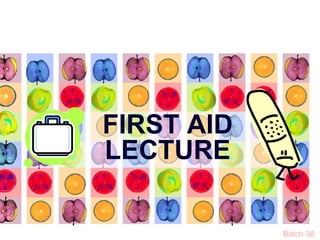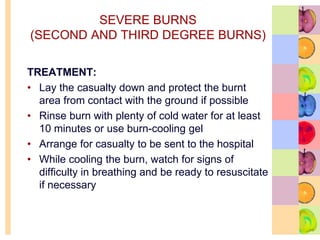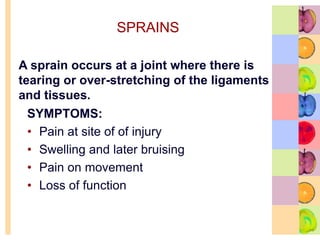The document provides information on first aid, including definitions, aims, responsibilities of first aiders, priority of casualties, recovery position, hyperventilation, fainting, shock, bee/hornet stings, cramps, choking, burns, fractures, dislocations, strains, sprains, foreign bodies in wounds, bandaging, transportation of casualties, and emergency casualty movement methods. It details symptoms, causes, and treatments for various medical conditions and injuries that may be encountered when providing first aid.












































